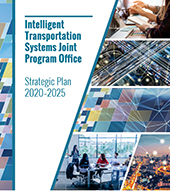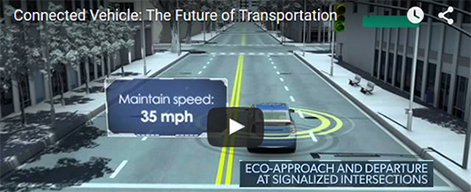News & Information
Wyoming Connected Vehicle Pilot Determines Appropriate Tractor-Trailer Antenna Placement and Equipment Configuration
A recent development in the Wyoming Connected Vehicle Pilot is seeing exciting results! A priority of the project, and of the U.S. Department of Transportation overall, is improving safety. Specifically, the Wyoming Pilot focuses on approximately 400 miles of Interstate I-80, which hosts vehicles from light-duty and passenger cars to commercial trucks and tractor-trailer units. The pilot project includes equipping semis with connected vehicle onboard units (OBUs) and antennas to enable communication with other equipped vehicles and the infrastructure. Tractor-trailer units in particular, though, provided unique challenges to installing this equipment functionally.
For the OBUs to be effective, signals containing messages with road and travel information must be able to move between drivers and fleet managers. These signals travel via dedicated short-range communications (DSRC), and DSRC signals require a clear line of "sight" for successful reception of messages. Antennas are utilized to send and receive these messages, so if an antenna is "hidden" (i.e., if there is not a clear path from one antenna to another), then the DSRC signal and the crucial information it carries will be inhibited. A tractor-trailer unit consists of a semi and one or more trailers, during testing, the Wyoming Department of Transportation (WYDOT) found that the box trailers on tractor-trailer units often blocked DSRC signal broadcasts due to antenna placement. The interruptions resulted in DSRC "shadows" behind tractor-trailer units. These shadows are areas in which the DSRC signal was degraded and are usually about 50 to 150 meters in length. This means that forward-collision warnings (FCWs) are rendered ineffective for any light-duty vehicles, such as typical passenger vehicles, that are behind the tractor-trailer unit in the DSRC shadow area.
However, the WYDOT pilot project team has successfully discovered an effective solution to the problem. Through research, testing, and hard work alongside vendors and the ITS Professional Capacity Building's Equipment Loan Program, the team realized that the antenna cable quality, type, and design all needed modification to work with the tractor-trailer units. The final result will ensure that FCW application works no matter which type of vehicle is behind the tractor-trailer unit. Details of the results will be published in a comprehensive installation plan.
For more information, please visit https://www.its.dot.gov/pilots/wyoming_antenna.htm.










